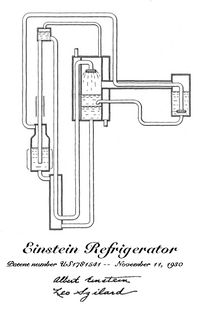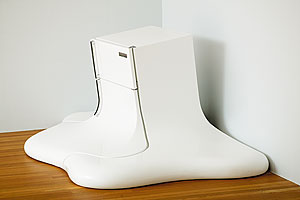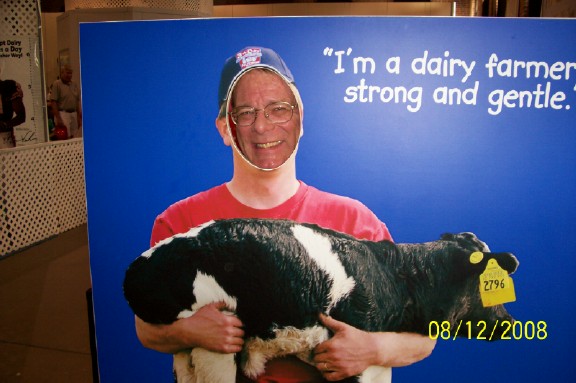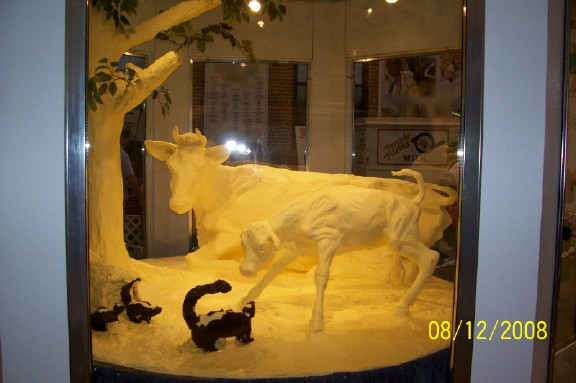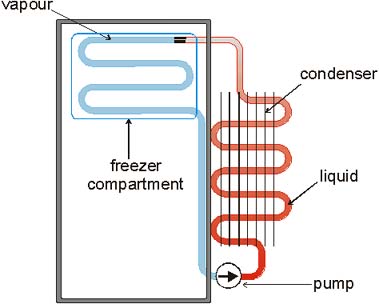Unlike many appliances there does not seem to be any “lists” of the most efficient stoves. There does not seem to be any comparisons of stoves. Like one with a convection oven compared to a combo microwave convection oven. There is however a whole lotto’ advice:
http://energyhawk.com/cooking/cooking4.php
Choosing the Right
Appliance For the Job
You can save energy simply by getting in the habit of cooking with the most efficient appliance possible for the food you are preparing.
In general, the higher on the following list, the less energy the appliance will cost you:
Microwave
Slow Cookers (“crockpots”)
Frying Pan
Toaster Oven
Gas Oven
Electric Convection Oven
Electric Oven
So, lets say you want to reheat some leftovers for lunch. You could pop it in your big, hulking oven, but it would be cheaper to use the toaster oven. It would be cheapest to heat it in the microwave. But be reasonable. You’re not going to make pancakes in your crockpot, so fire up that electric frying pan with impunity. And I know the Thanksgiving turkey won’t fit in most toaster ovens.
These energy savings are not something to sneeze at. For example, using a microwave will reduce your energy consumption by about two-thirds compared to using a regular oven.
Perhaps the greatest innovation of the ’70’s was a great appliance to cook soups and stews that need to simmer for a long time. Yes, I’m talking about the crockpot. (Points off for those of you who guessed Leisure Suits were the discovery.)
Finally, you know how Asian cuisines always emphasize steaming vegetables instead of boiling them? You use a lot less energy steaming vegetables over a little bit of water compared to boiling them in a whole pot of water (some of us think they taste better that way, too). Or try microwaving them in a covered bowl with a little water in the bottom, to get the same effect using less time and less energy.
|
 |
 |
http://www.eartheasy.com/live_energyeffic_appl.htm
Stoves
Use the burner which is the closest match to pot size. Heat is lost and energy is wasted if burner size is larger than pot size.
Use lids on pots and pans so you can cook at lower settings.
Keep drip pans under conventional coil burners clean. Don’t line drip pans with aluminum foil – they can reflect too much heat and damage the elements.
Only preheat when baking.
Check your oven temperature. Use a separate oven thermometer to ensure your oven control is accurate.
Make sure the oven door seal is tight. Avoid opening oven door while baking – each time the door is opened, about 20% of the inside heat is lost.
Turn oven off a few minutes before food is ready, and let oven heat finish the job.
Gas stoves: electronic ignition (piezo) will use about 40% less gas than a pilot light.
Pilot light and burner flame on gas stoves should be blue. If flame is yellow, ports need to be unclogged or adjusted. Ports can be cleared with pipe cleaners.
Use the microwave. They use only 1/3 to 1/2 as much energy as conventional stoves.
Induction cooktops use 90% of the energy produced compared to only 55% for a gas burner and 65% for traditional electric ranges.
Sun (Solar) ovens are the most energy-efficient cooking appliance, as they require no fuel of any kind to cook, yet reach temperatures of 360° – 400°.
Hybrid solar ovens have all the benefits of a solar oven, with the added convenience of an energy-efficient electric backup for use when sun power is not available. When used in ‘electric’ mode, these units use 75% less energy than conventional electric range.
:}
This one is brand spanking new:
http://www.eartheasy.com/article_induction_cooking.htm
Induction Cooking
A revolution in home cooking
Induction cooking uses 90% of the energy produced compared to only 55% for a gas burner and 65% for traditional electric ranges.
Cooking food at home may have just gotten safer and easier, thanks to the help of an induction cooktop that controls and intensifies heat using electromagnetism. However, this is no new phenomenon. Induction cooking has been around for decades but until recently never made it past a restaurant’s kitchen.
How does it work?
Traditional electric cooktops use some form of electric resistance to create heat, which is transferred to the saucepan and its contents. Induction cooking is based on magnetic fields: each ‘element’ (an induction coil) generates a magnetic field that induces heat in steel cookware placed on top of it. In essence, the pot becomes the element that cooks the food, so the cooktop surface doesn’t get as hot as other cooktops. Induction cooktops have the same instant control as gas and are the fastest of all cooktop types to heat and cook food.
The only stipulations include:
• pots and pans must be made of steel, cast iron or other combinations of metals that will react with the magnetic field.
• a kitchen must be wired for 220 volts (which is not likely if you are using gas). What’s more, the induction cooktop is more energy efficient:
• Induction cooking uses 90% of the energy produced compared to only 55% for a gas burner and 65% for traditional electric ranges.
• Induction provides extremely fast boil and re-boil, over 50% faster than gas or electricThe surface of the cooktop does not heat up, so overflows and spills do not stick. The cooking surface stays cool even during the cooking cycle.
The Magnetic Factor
Induction cooking uses the transfer of magnetic energy (magnetic coils) — rather than flames or electric elements — to generate heat. Within this magnetic field, molecules in the pan jumble around at very high frequencies; the friction creates instant heat.If consumers are curious if the pans they already own are capable of induction cooking, all they have to do is hold a magnet to the bottom of the pan. If the magnet sticks, the pan will work with induction.
Cleaning
Induction cooktops are easy to clean. They have a continuous surface with no dirt traps, and the controls are touch-sensitive, so there are no knobs to clean around. Because the surface doesn’t get as hot as other electric cooktops, most spillages won’t bake on, although you do have to be careful with sugar because it can still pit the surface. On the downside, some models don’t have a lip around the edge to contain spills, and you may have to buy a special cream to keep it streak-free.
Cost
Induction cooktops are expensive. Typical price: Twin-element: around $1700; two radiant ceramic and two induction elements (as one unit): $1800–$2500; four induction elements: $3000–$4000+.
:}
Then there are some unconventional approaches:
http://www.lostvalley.org/haybox1.html :} THIS ONES AS OLD AS THE HILLS:
Haybox cooking (also called retained-heat cooking) is an age-old method that can be used to conserve energy not only during times of crisis, but anytime. Depending on the food item and amount cooked, the use of a haybox or insulated cooker saves between 20% and 80% of the energy normally needed to cook a food. The longer an item usually takes on a stovetop, the more fuel is saved. For example, with a haybox, five pots of long-cooking dry beans will use the same amount of fuel to cook to completion as just one pot cooked without a haybox.
The principle of retained-heat cooking is simple. In conventional cooking, any heat applied to the pot after it reaches boiling temperature is merely replacing heat lost to the air by the pot. In haybox cooking, food is brought to a boil, simmered for a few minutes depending on the particle size (5 minutes for rice or other grains, 15 minutes for large dry beans or whole potatoes), then put into the haybox to continue cooking. Since the insulated cooker prevents most of the heat in the food from escaping into the environment, no additional energy is needed to complete the cooking process. The hayboxed food normally cooks within one to two times the normal stovetop cooking time. It can be left in the haybox until ready to serve, and stays hot for hours. “Timing” is much less important than in stovetop cooking: stick a pot of rice, beans, or stew in at lunch time, and it will be ready when you are, and steaming hot, at dinner time.
The haybox itself is any kind of insulated container that can withstand cooking temperatures and fits relatively snugly around the pot. Hayboxes have been made using hay, straw, wool, feathers, cotton, rice hulls, cardboard, aluminum foil, newspaper, fiberglass, fur, rigid foam, and/or other suitable materials as insulation. The insulation is placed between the rigid walls of a box, within a double bag of material, or lining a hole in the ground. “Instant hayboxes” have been created by wrapping a sleeping bag, blankets, and/or pillows around a pot. The most effective insulating materials create many separate pockets of air, which slow down the movement of heat. 2 to 4 inches of thickness (depending on the material) are necessary for good insulation. Some materials, such as aluminum foil or mylar, actually reflect heat back toward the pot. Important characteristics of any insulating material incorporated into a haybox include:
- It must withstand cooking temperatures (up to 212 degrees F or 100 degrees C) without melting.
- It does not release toxic fumes (any kind of foam insulation needs to be covered with aluminum foil or mylar) or dangerous fibers (fiberglass also needs to be covered).
- It can be fashioned to be as snug-fitting as possible around the pot. A little pot in a big box will not cook as effectively; it’s better to wrap pillows, towels, or blankets around it to fill up the space.
- It can be made to form a relatively tight seal, so that heat does not escape from the cooking cavity. Since hot air rises, a container designed to open at the base rather than the top will retain more heat.
- It is dry, and can be kept dry, since wet materials don’t insulate as well. An inner layer of aluminum foil or mylar helps keep cooking moisture from entering the walls of the box. Mylar, which can be salvaged from used food storage containers, balloons, etc., tends to be a more durable inner layer than aluminum foil.
Cooking containers, too, should have tight-fitting lids, to prevent the escape of heat and moisture.
Since water is not lost in haybox cooking the way it is during extended stovetop simmering, the amount of water used to cook grains and beans is normally reduced by one-quarter. Instead of adding 2 cups of water per cup of dry rice, try adding 1 1/2. Also, the larger the amount cooked, the more effective haybox cooking is, since a full pot has more mass and therefore more heat storage capacity than a half-full pot. Haybox cooking is ideally suited for a family or large group, or anytime there’s a reason to cook in quantity. If you’re cooking alone, try cooking full pots of food using a haybox, then reheating small portions for individual meals–this too can conserve fuel.
Retained-heat cooking has many other advantages in addition to energy and water conservation. As mentioned, it makes “timing” less critical, since it keeps meals hot until serving time. Once the initial boil-and-short-simmer stage is past, it also eliminates the danger of burning the food on the bottom of the pot (the sad fate of too many pots of grains, beans, or other foods left simmering too long without stirring on the stove). Hayboxed food can actually be better for you, and tastier, than food prepared exclusively on a stovetop, because most of the cooking takes place in the 180 degrees F to 212 degrees F range, rather than at a constant 212 degrees F (lower temperatures preserve more flavor and nutrients, as they also do in crockpot cooking and solar cooking).
http://idreamofgreenie.blogspot.com/2008/01/fast-energy-efficient-cooking.html
No, it’s not a campfire or a blow torch.
I have a childhood memory of my mother making our dinner using a pressure cooker. It had a small weight on top of it that would bobble around when it reached full steam. I have to admit, it seemed a little intimidating, knowing that if you touched it the wrong way, it might explode all over the kitchen.
Fast forward to adult life. One of my holiday gifts was a pressure cooker. ( So much for jewelry and clothes.) Oh no, I thought. I’m not using that thing. It’s old fashioned, it’s passe, and most importantly, that thing is dangerous!
After a few years, I decided to open the box. I read the instructions. I inspected the pot. Hmmm…no more bobble weight on the top. The new models seemed pretty much idiot proof now. So I gave it a try, with careful supervision. I sauteed a little onion, carrots and celery and threw in some chicken parts, seasoning and water. I sealed it up and turned on the heat. I sat there, staring at the thing to make sure it didn’t explode. It didn’t, naturally. And in 15 minutes, I had made chicken soup. I was amazed. I will try this again, I thought. And I did. Again and again. Now I am a huge proponent of pressure cookers. I use it all the time, and my family is amazed at what comes out of there so quickly. Pot roast, chicken, our lamb and french bean stew…in the time you would boil pasta!
At some recent family gatherings, the ladies would congregate and swap stories, one of which was about their beloved crock pot. In only 8 hours, they would come home to a nice hot meal. That’s all good but 8 hours? Not only is the pressure cooker faster, but it uses a heck of a lot less energy. 8 hours vs. 15 minutes. I mentioned this to the ladies. And they say,”Oh yeah, but I’m afraid of it.” Aren’t we all? Hell, if we can give birth, this is a cakewalk.
There are several good ones on the market. If you have an interest in an energy efficient way to cook your family a nice, healthy meal, this one is my choice.
Fagor Pressure Cookers. This is a great company out of Spain that makes good quality products. Go to www.fagorpressurecookers.com.
:}
http://www.sunoven.com/?gclid=CPiYncvZv5QCFQH0IgodrnQAUQ
Then
http://www.solarcookers.org/basics/how.html
There
http://solarcooking.org/
Is
http://www.cookwiththesun.com/
The Sun:
http://www.knowledgehound.com/topics/solarcoo.htm
Cookin’ with Sunshine
Ed Eaton
In just a few days, the sun showers us with energy equal to all the
earth’s fossil fuels. Consider our environment and its condition;
using solar energy seems only logical. One way to use the sun is
to cook with the solar energy. We can bake, fry, steam, or even
solarque our favorite dish right in our own backyard.
Brief History
Successful solar cookers were reported in Europe and India as early
as the 18th century. The increased use of glass during that period
helped inventors to trap heat & hot air. In 1870, Augustine Mouchot
invented a fairly portable oven for the French Foreign Legion. It
could bake a pound of bread in 45 minutes or 2 pounds of potatoes
in one hour.
Around the same time, W. A. Adams developed an eight-sided mirrored
oven which reflected light through a glass cone located in the center
of the oven. This oven could cook a 12 pound turkey in 4 to 5 hours.
This is still a popular design today. We actually use a large model,
very similar to Adam’s oven. In this oven we can cook 60 pounds
of food at a time
Present Times
Interest in solar energy seems to fluctuate along with the price
of fuels (oil in particular). We feel a new awareness is blooming.
It is due to the ever growing concerns about OUR planet EARTH and
our desire to help
Earth out! Solar cooking enables us to contribute in a small, simple
way.
:}
:}




